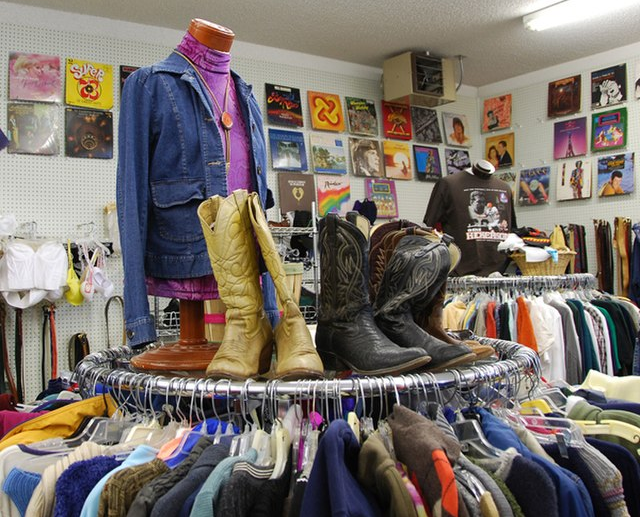Opinion: Thrifting can reduce the damage caused by fast fashion
The fast fashion company Shein has been accused of harming the environment and taking advantage of smaller designers.
February 7, 2022
The 21st century is devolving in fashion rather than evolving — which is not a bad thing at all.
The modern era is capitalizing on older fashion trends, labeling them as fashionable. In the past couple of years, fashion styles from decades like the ’50s, ’90s, and early 2000s have suddenly resurfaced. This is great because with people liking the vintage aesthetic, they are also choosing to shop sustainably by thrifting.
The shopping of second-hand clothing helps the environment and can reduce the impact of fast fashion retailers like Shein. As stated by the Oxford dictionary, fast fashion is the reproduction of newly fashionable clothes at high speed and low cost. Going into 2022, everyone should collectively cease following and buying fast fashion.
Admittedly, these fast-fashion retailers have some great products that are inexpensive. But the environmental website Earth.org estimates that $500 billion is wasted every year by the lack of recycling of clothing.
Shein, in particular, has been accused of stealing clothing designs.
“I’m so over these major brands stealing from black designers,” Black designer Mariana Diallo wrote in a tweet that showcased her brand’s dress next to Shein’s. “They couldn’t even change ONE thing and it’s now one of their highest selling items.”
Shein responded to a similar accusation in an article in the Guardian.
“We are constantly updating our processes and procedures to ensure that issues like this don’t happen and when they do, that we are able to respond quickly to remedy the situation,” the company said.
According to Medium.com, materials used by Shein cause harm to the environment because they do not decay as quickly as some other fabrics.
“This means that every piece of clothing we buy from Shein will likely spend much more time in a landfill than they will ever spend in our wardrobes,” the Medium article said.
Thrifting is, all in all, better. Fortunately, Gen Z has made thrifting a trend, which is actually beneficial to both the environment and their pockets.
According to Earth.org, 20 percent of global wastewater comes from textile, cotton, and dyeing. This leaves many chemicals in the Earth’s water system.
“Believe it or not, the fashion industry is the second most polluting industry in the world, contributing to 10 percent of humankind’s carbon emissions,” according to an article on the New York environmental website GroupForTheEastEnd.org.
Understandably, thrifting isn’t for everyone. Some people feel like shopping at fast-fashion establishments is a faster and easier process. Some people can’t afford anything other than an online fast fashion establishment, which is okay.
However, people who have the time and resources should think about thrifting once in a while.



